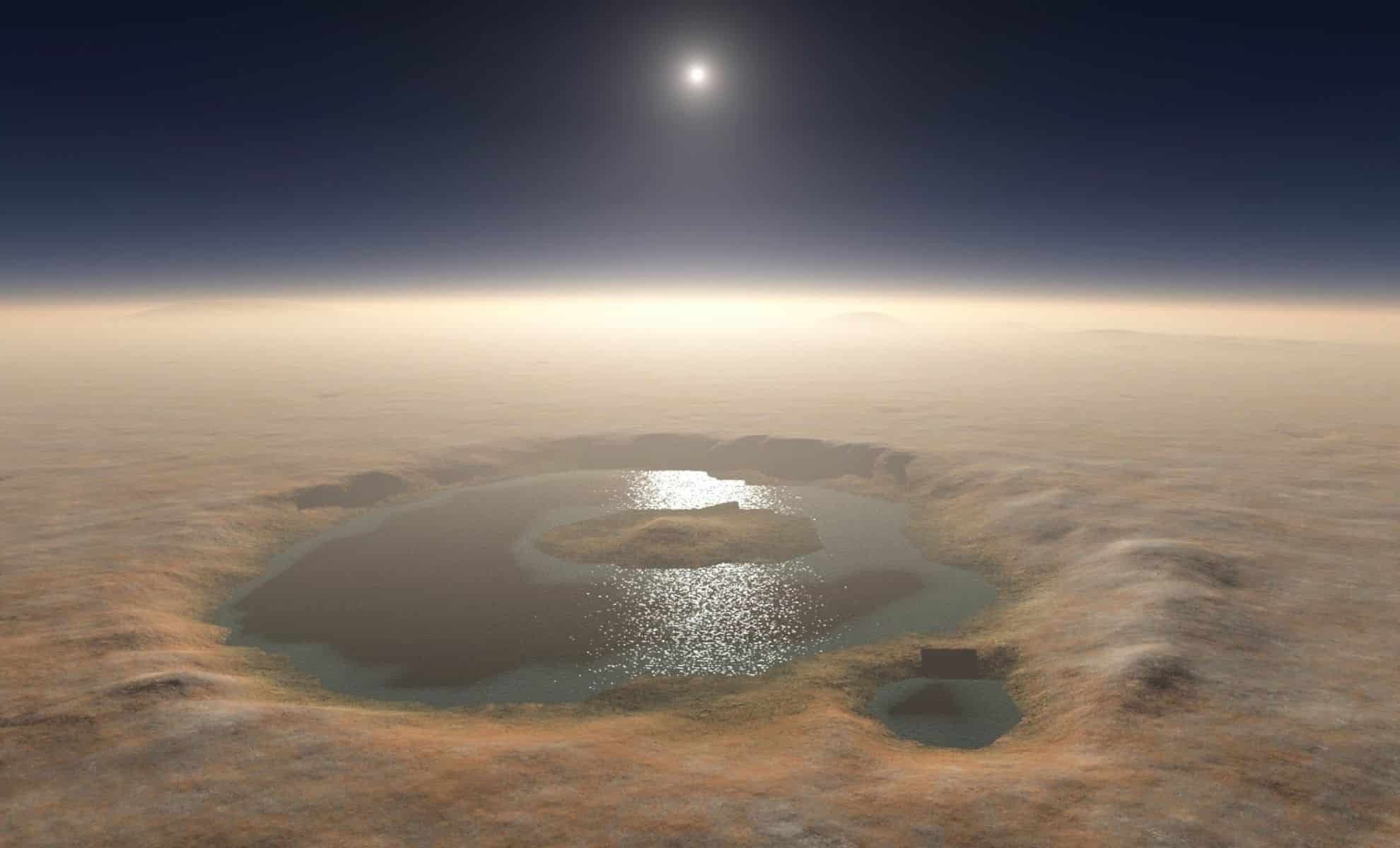Recent studies have cast doubt on the presence of a lake of liquid water beneath the ice cap at the south pole of Mars, a discovery that initially raised hopes of finding microbial life on the Red Planet.
In 2018, the European Space Agency’s Mars Express satellite detected strong radar bounces that indicated a 12-mile-long lake beneath the surface of Mars. However, new research from Cornell University provides a less dramatic but complex explanation for these radar signals, suggesting they may be caused by by natural jamming of radar waves rather than liquid water.
Investigation of radar reflections
The initial excitement stemmed from radar data collected by the Mars Express satellite that revealed bright reflections from beneath the south polar ice cap, similar to those seen in subglacial lakes on Earth. These considerations led scientists to hypothesize the existence of a liquid water lake that potentially harbors microbial life.
In support of this hypothesis, researchers from the University of Cambridge found patterns in the surface ice consistent with a subglacial lake. However, recent simulations by Cornell researchers suggest that small variations in the composition and thickness of the ice layers could cause similar radar reflections without the presence of liquid water.
Daniel Lalich, a research scientist at Cornell’s Center for Astrophysics and Planetary Science and lead author of the new study, says the radar signals can be explained by constructive interference of radar waves. “I can’t say it’s impossible for there to be liquid water down there, but we’re showing that there are much simpler ways to achieve the same observation without having to stretch so far, using mechanisms and materials that we already know are there .”
“But just by random chance you can create the same observed signal in radar,” Lalich said.
It is known to exist at the Martian poles, altering the composition and spacing of ice layers. The results showed that the observed bright reflections could be caused by these natural variations in the ice.
Lalich explains, “Just by random chance you can produce the same observed signal in the radar. This is the first time we have a hypothesis that explains the entire population of observations under the ice cap without introducing anything unique or special.” “
New findings
The new research provides a detailed and more realistic model to explain the bright radar reflections that were originally thought to be an indication of liquid water. By simulating different layering scenarios, the team demonstrated that small variations in ice composition and layer thickness can cause constructive interference with radar waves and amplify their reflections. These reflections, while similar to those produced by liquid water, do not necessarily indicate its presence.
Lalich’s study, titled “Small Variations in Ice Composition and Layer Thickness Explain Bright Reflections Beneath Liquid Water-Free Martian Polar Cap,” published in Scientific advances, outlines how bright radar signals can be produced by known materials and conditions on Mars. “The idea of liquid water even a little bit near the surface would be really exciting,” Lalich said. “I just don’t think it’s there.
Implications for the search for life on Mars
The potential existence of liquid water on Mars is an exciting prospect because it raises the possibility of microbial life. While robotic explorers such as NASA’s Perseverance rover have provided extensive evidence of ancient watercourses on the surface of Mars, current conditions at the poles make the existence of liquid water unlikely. The temperature and pressure on Mars are significantly different from those on Earth, complicating the possibility of liquid water existing beneath the ice caps.
Despite this, the search for life on Mars continues. Scientists are exploring other areas and using advanced technology to detect signs of past or present life. New research from Cornell underscores the importance of considering simpler explanations and rigorous hypothesis testing before concluding that liquid water exists. Lalich’s findings suggest that the bright radar reflections may be due to natural variations in the ice rather than requiring the presence of liquid water.
Cornell’s study has sparked debate in the scientific community, with some researchers expressing skepticism. “The Cambridge scientists said they had not seen the new research, but said the unusual patterns they found on the surface could not be explained by radar interference,” the Cambridge team said in a statement.
While this new understanding may reduce the likelihood of finding liquid water at the south pole of Mars, it does not diminish the importance of continued exploration. Robotic missions and future human explorers will still play a key role in unraveling the mysteries of Mars and assessing its habitability. The Perseverance rover, for example, is currently exploring an ancient river delta in Jezero Crater that could provide valuable clues about the planet’s watery past and its potential to support life.
